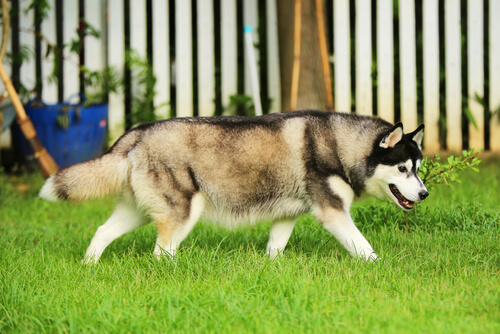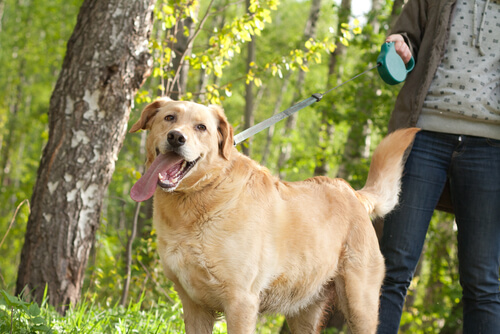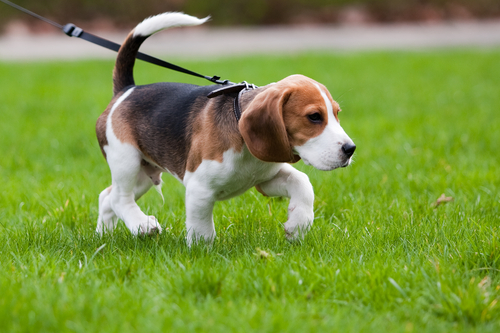How to Teach a Dog to Pee Outside

Teaching a dog to pee outside is one of the most difficult tasks for a dog owner. This is especially true for first-time owners. In this article we are going to try to summarize how to successfully take on this challenge.
What to avoid
First of all, as responsible owners, we must avoid negative reinforcement or punishment. Many times we leave our puppy alone in the house and when we come back, we find a “surprise”. However, it is possible that the pup peed himself two or more hours ago. Therefore, it doesn’t make sense that we would scold him now. We should show him what he has done wrong or rub his snout with the pee.
Taking our pet out before he is allowed to go outside is another mistake that many owners make. If the veterinarian stipulates that for the first two months he cannot go out, especially if it’s because he does not have all his vaccinations, then he cannot go out.

Peeing in the house
Sure, there are many ways to teach a dog to pee outside. However, some experts say that you should give him a space at home where he can do his business. You should do this before teaching him to do it in an appropriate place outside. This is convenient if he needs vaccines or he cannot go outside.
To prevent your pet from peeing inside, buy so-called doggy diapers or training pads.
Training pads or doggy diapers
The training pad or doggy diaper is a diaper of mixed composition, typically cotton and waterproof plastic. It absorbs pee and reduces odor. When our dog pees, we must get a clean training pad and absorb all of the urine with it. This way, although we cannot distinguish the unpleasant odor, the puppy will be able to identify it.
Once the diaper is soaked, we must take it to the area where we allow our dog to do his business, such as the bathroom. Every time that we see our dog start urinating, or we suspect that he is about to pee, we must take him to the training pad. Little by little, with time and patience, our pet will start associating the training pads as the place to pee.
Peeing outside
When our veterinarian allows us to take our dog out for walks, that is, when he has all of his vaccines in order, the mission to learn to pee outside begins. At that time, we will take away the bathroom training pad.
By now, our puppy will already know that the training pad is the place where he can pee. We will control the times when our dog needs to empty his bladder. These times are usually 20 minutes after eating or drinking, after playing, and when waking up.
Once we put the leash on him and leave the house, we will wait until getting to the park, a place with soil, or the closest “peepee can” to prevent the dog from urinating on the sidewalk or entrances.
It is key to identify a place close to home where we can walk our dog.
Once we have reached the chosen spot to take our puppy out, we will place the training pad on the ground so that it can be soaked with urine. It is very possible that we are not successful the first time. As they say, “Rome was not built in a day.”

Persistence, key to success
After various attempts and walks with the doggy diaper, our pet will start to associate the training pad that used to be in the bathroom with the outside spot where he has to pee. When the dog finally is able to pee on the training pad, we will give him a reward. It is recommended to give him an appropriate treat for his size and age.
We should continue this ritual as long as needed. Always try to place the training pad in the same spot, and reward the dog each time that he is able to pee there.
When the puppy has been successful consistently, we will be ready to go outside without the training pad. We will continue to arm ourselves with treats to reward our small companion every time that he gets it right.
Remember that the secret for success resides in persistence, patience, positive reinforcement, and olfactory identifiers. Good luck!
All cited sources were thoroughly reviewed by our team to ensure their quality, reliability, currency, and validity. The bibliography of this article was considered reliable and of academic or scientific accuracy.
- Asociación Internacional de Consultores de Conducta Animal – IAABC (2019) Manual de entrenamiento canino. Recuperado el 26 de enero de 2022, disponible en: https://m.iaabc.org/docs/espanol/IAABCManual_digitalv120919.pdf